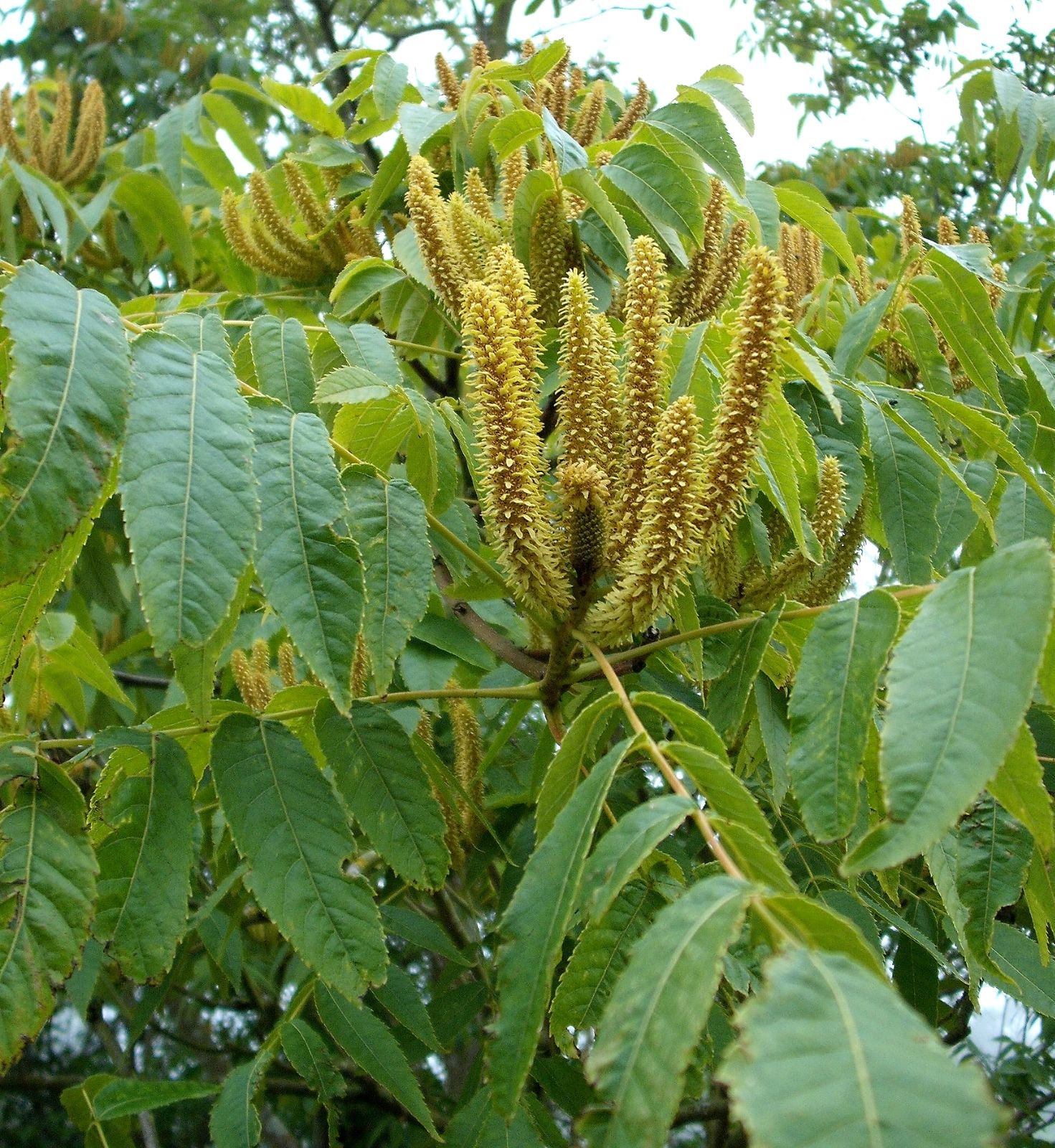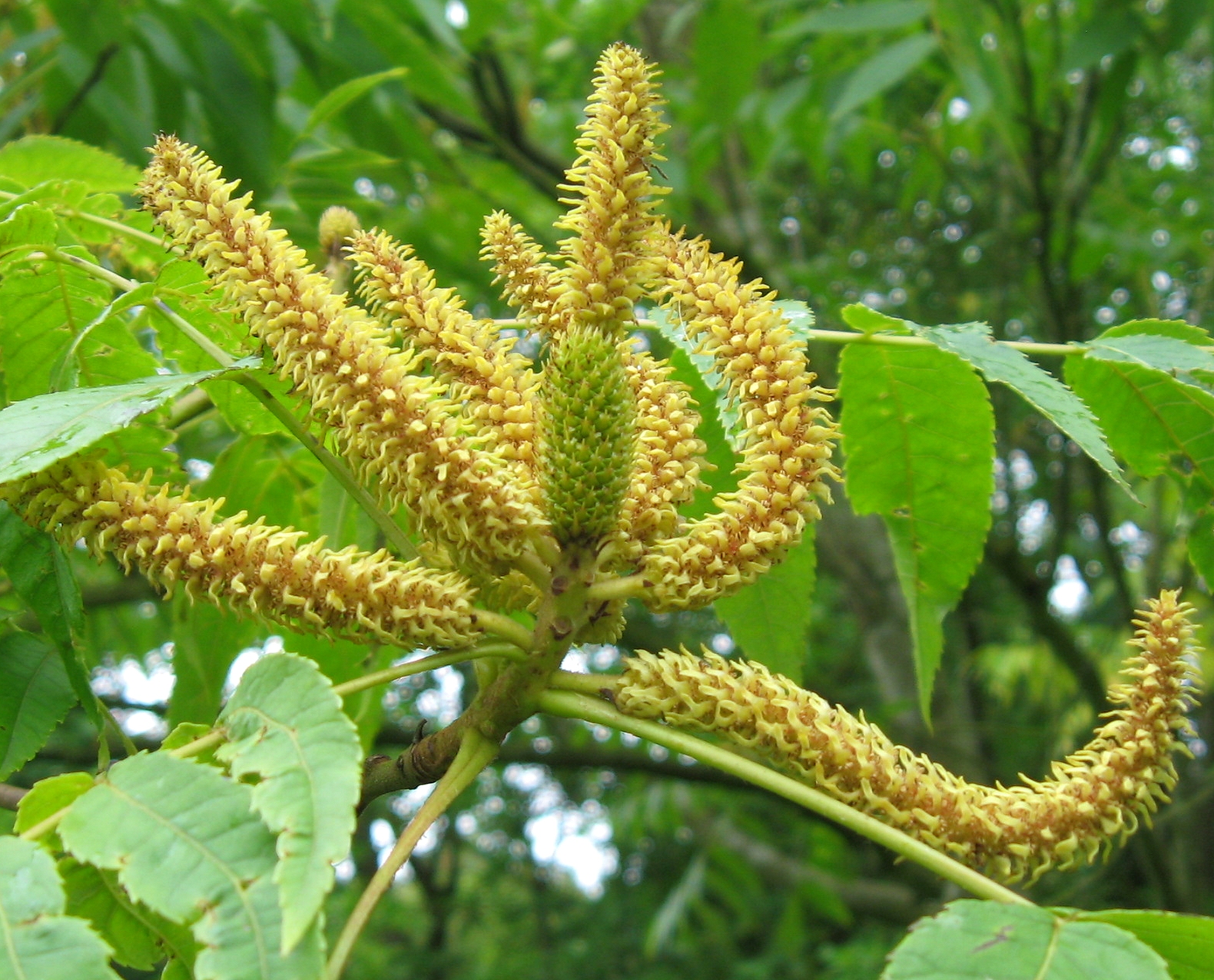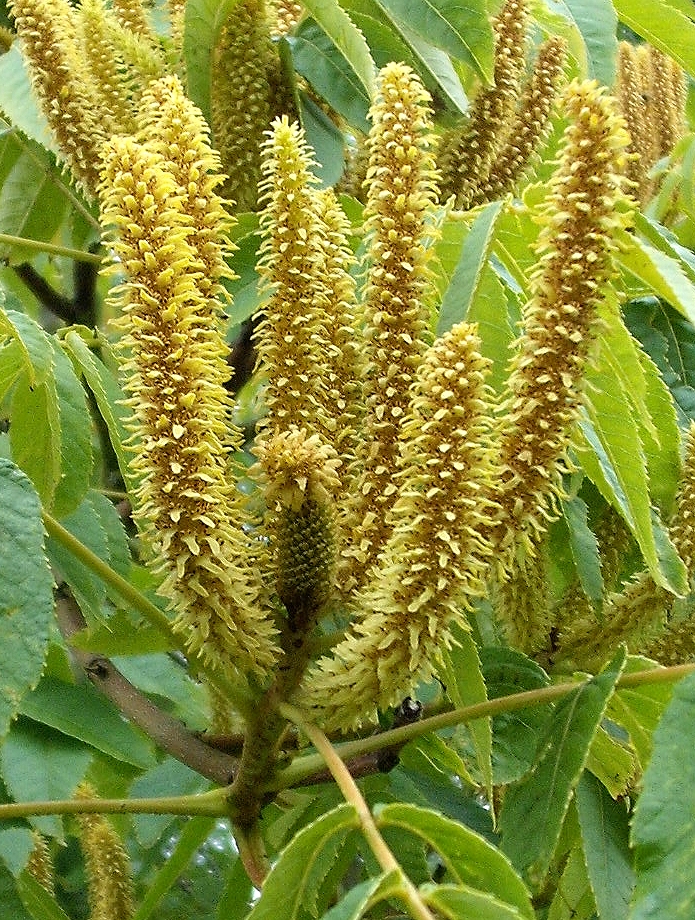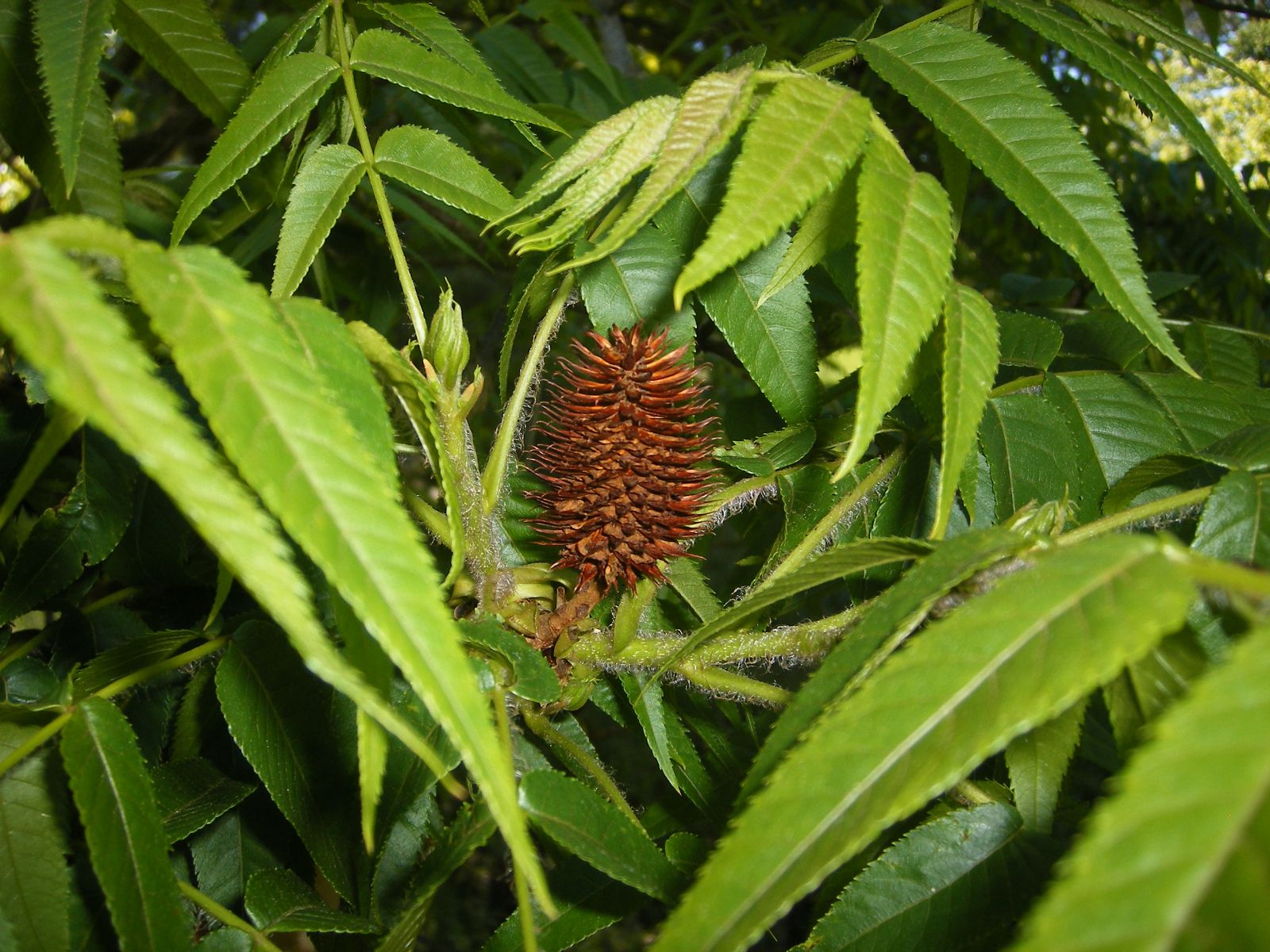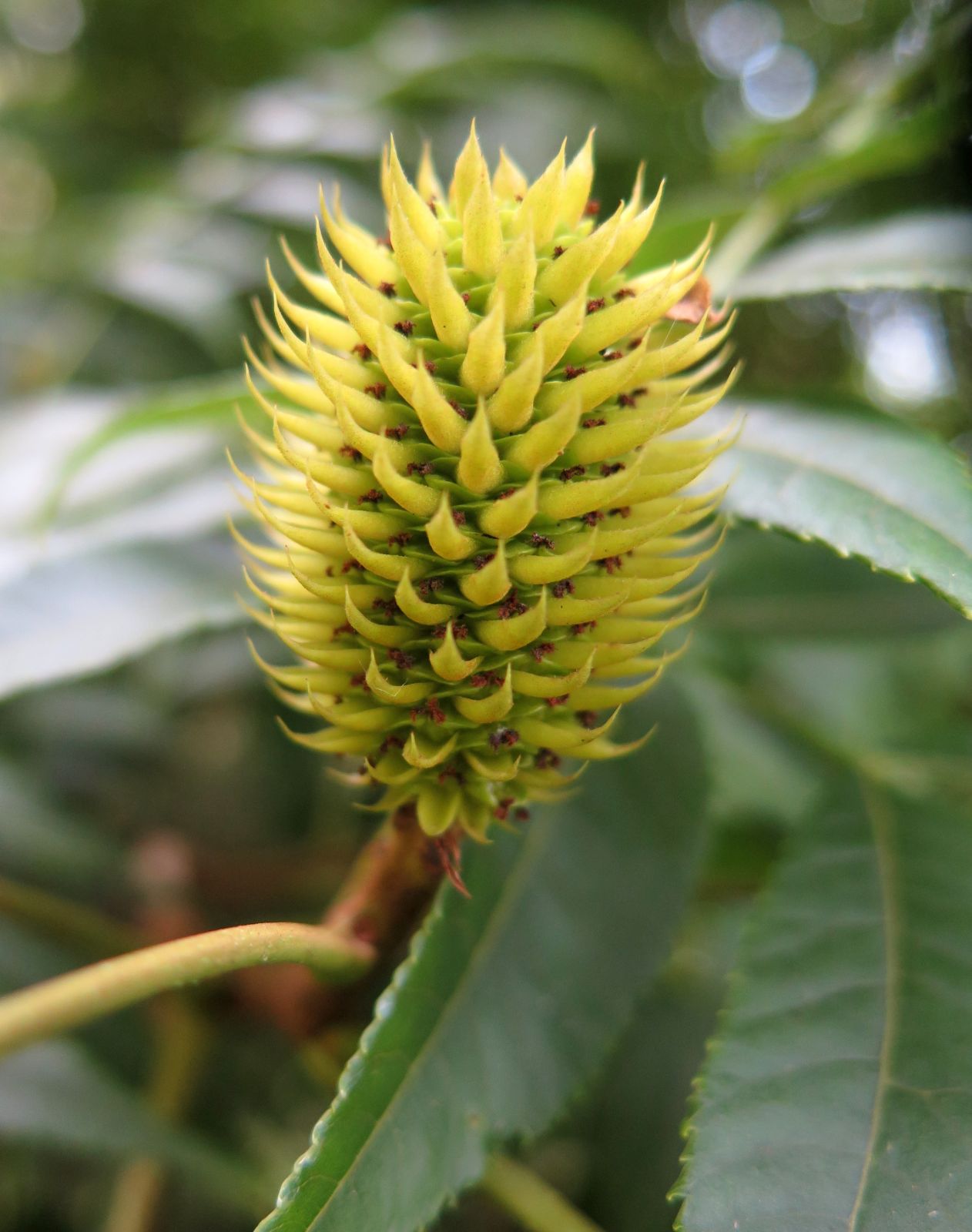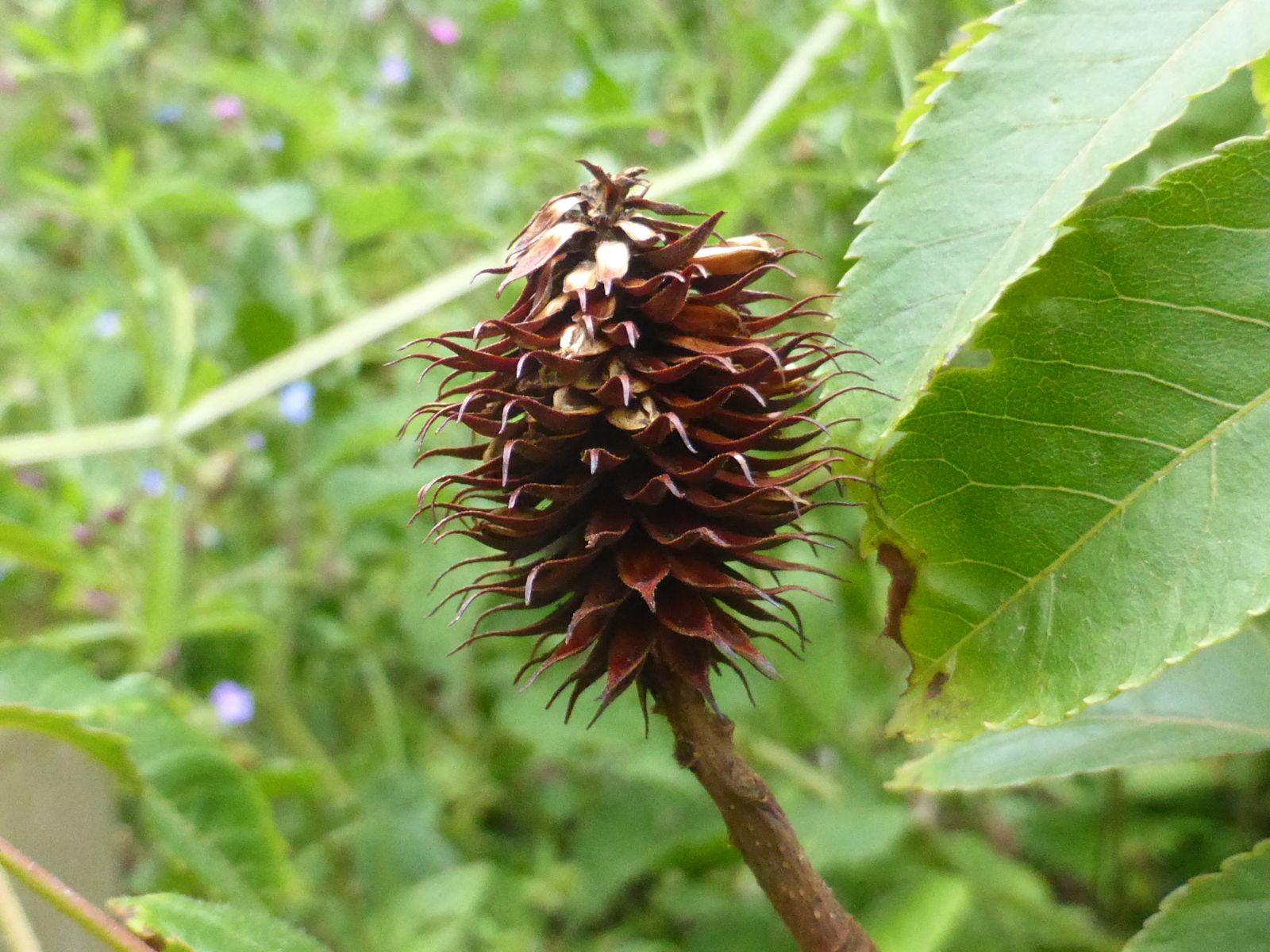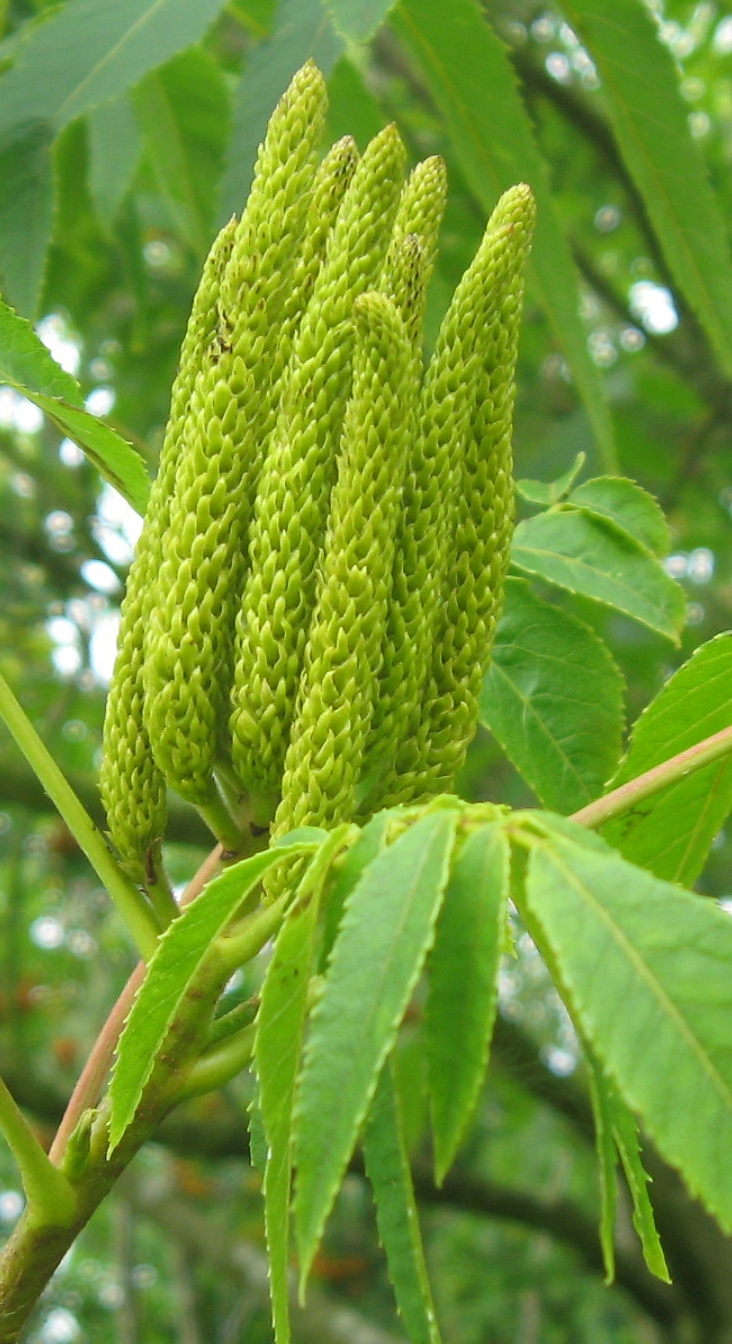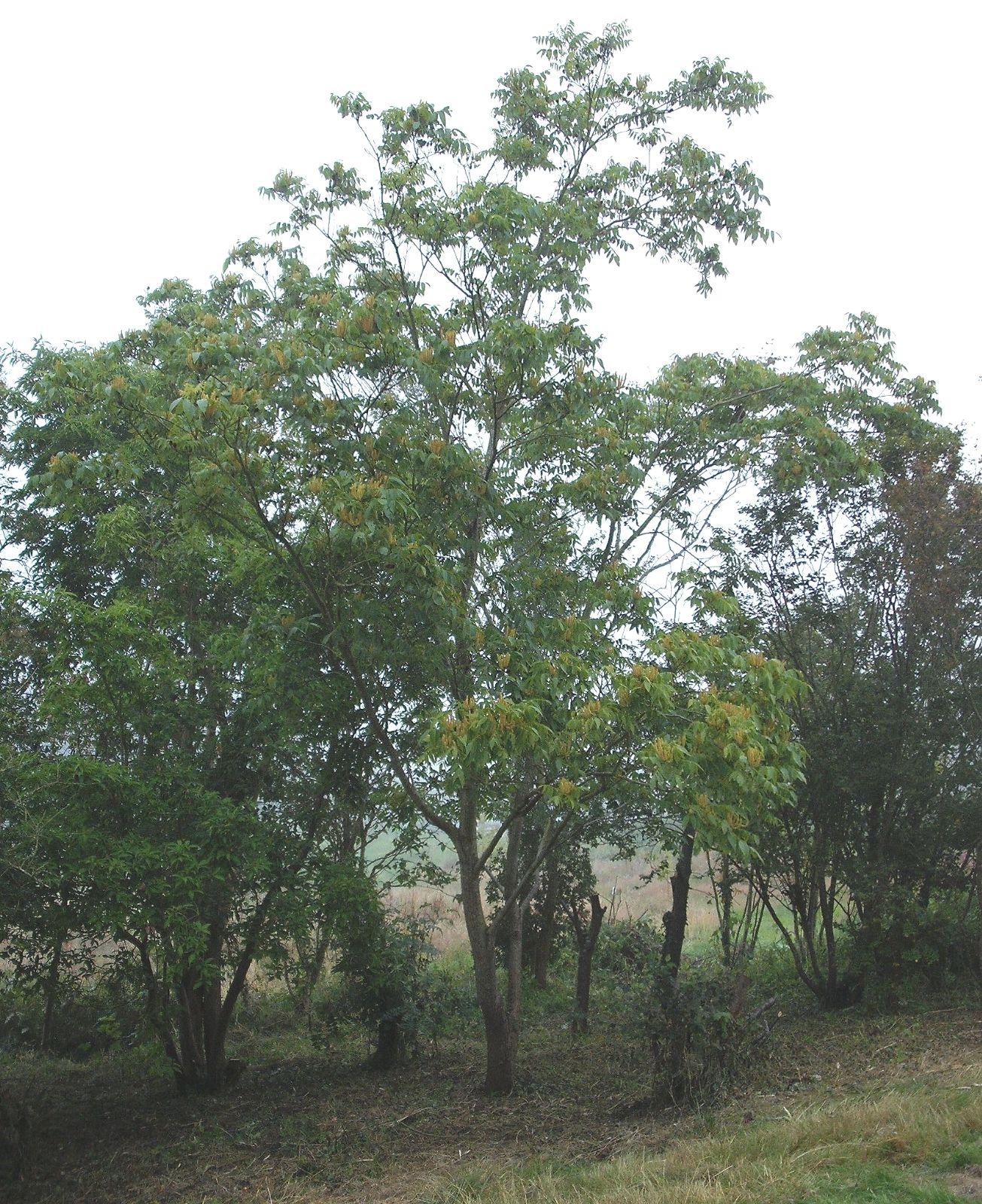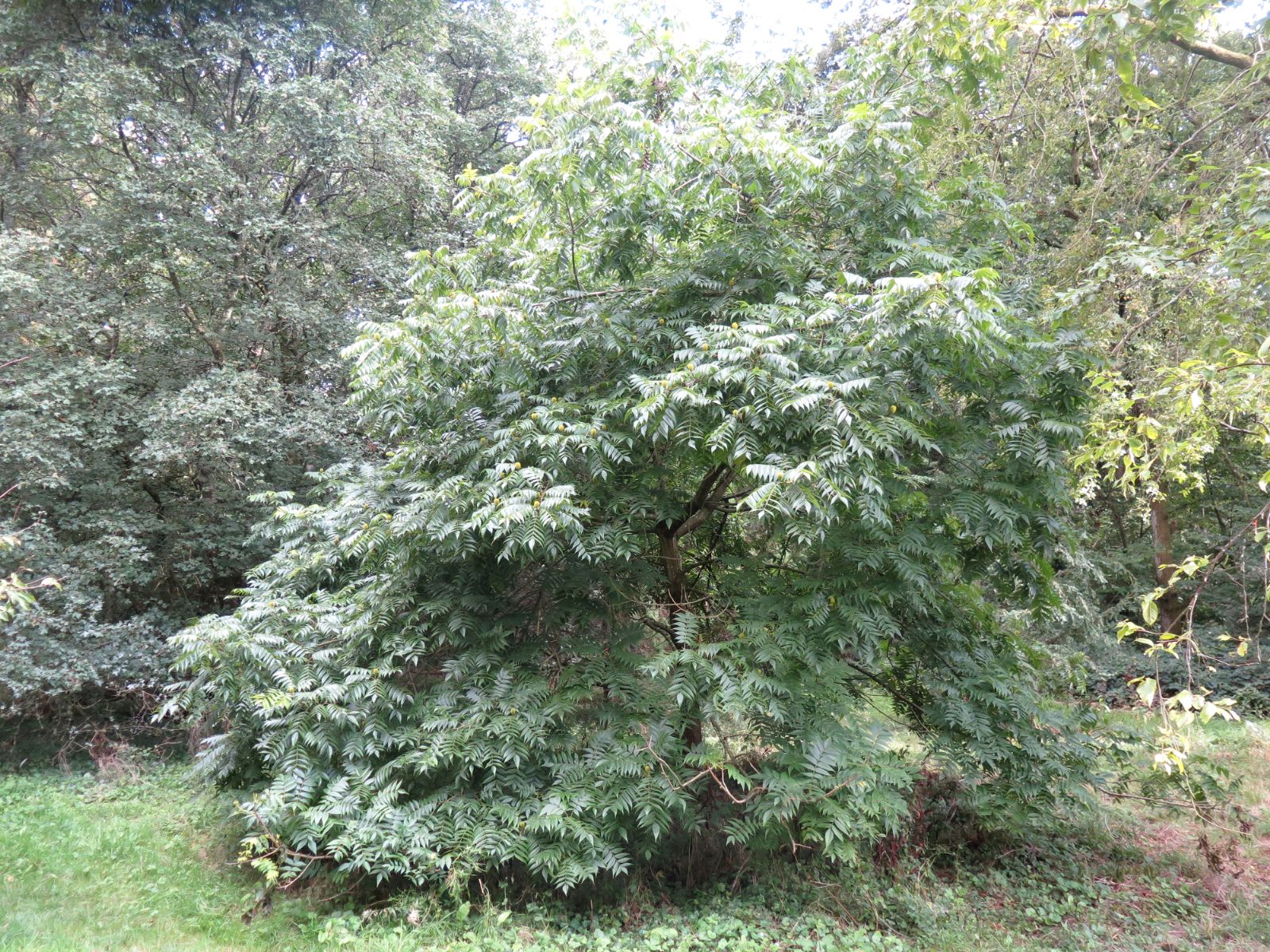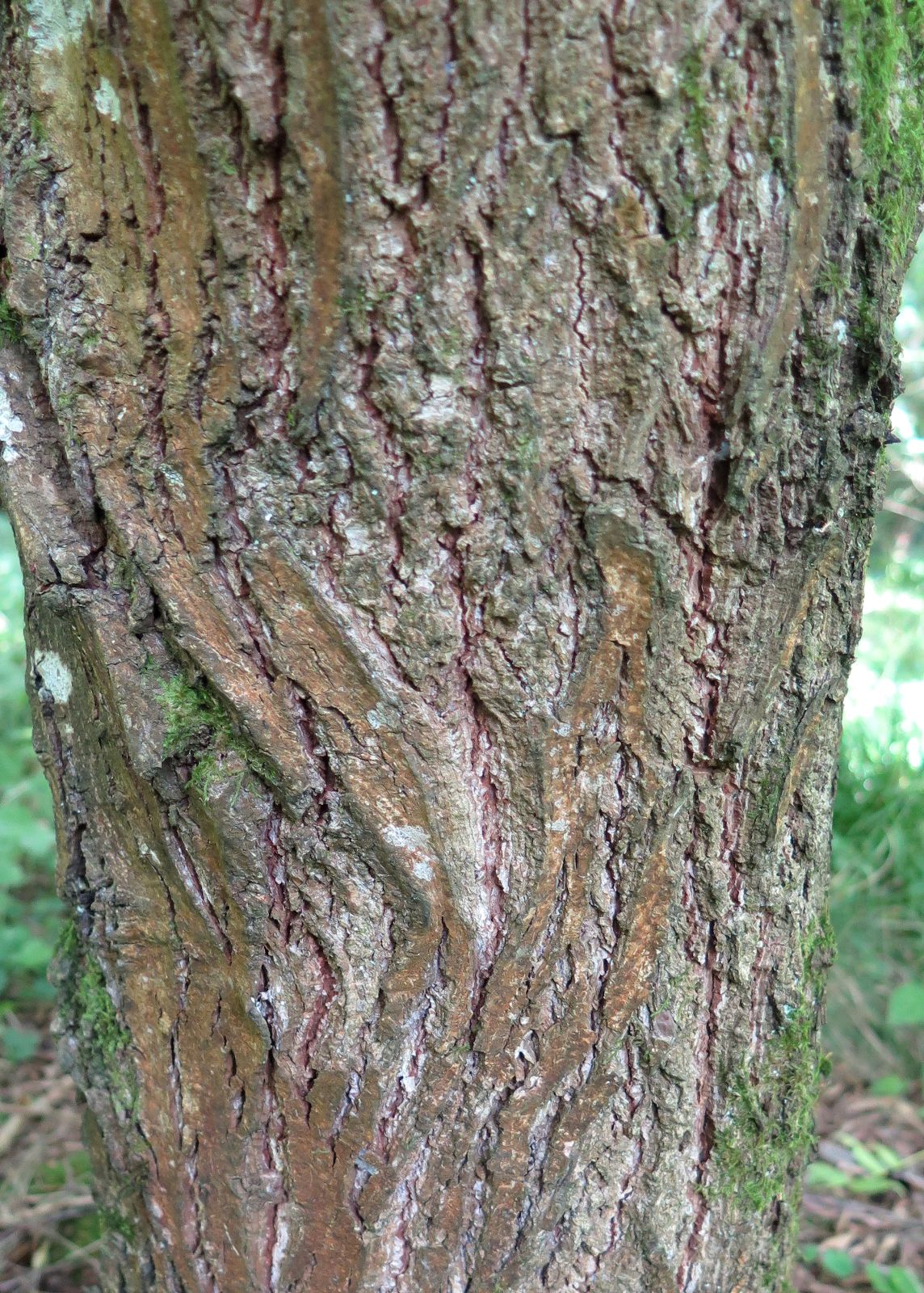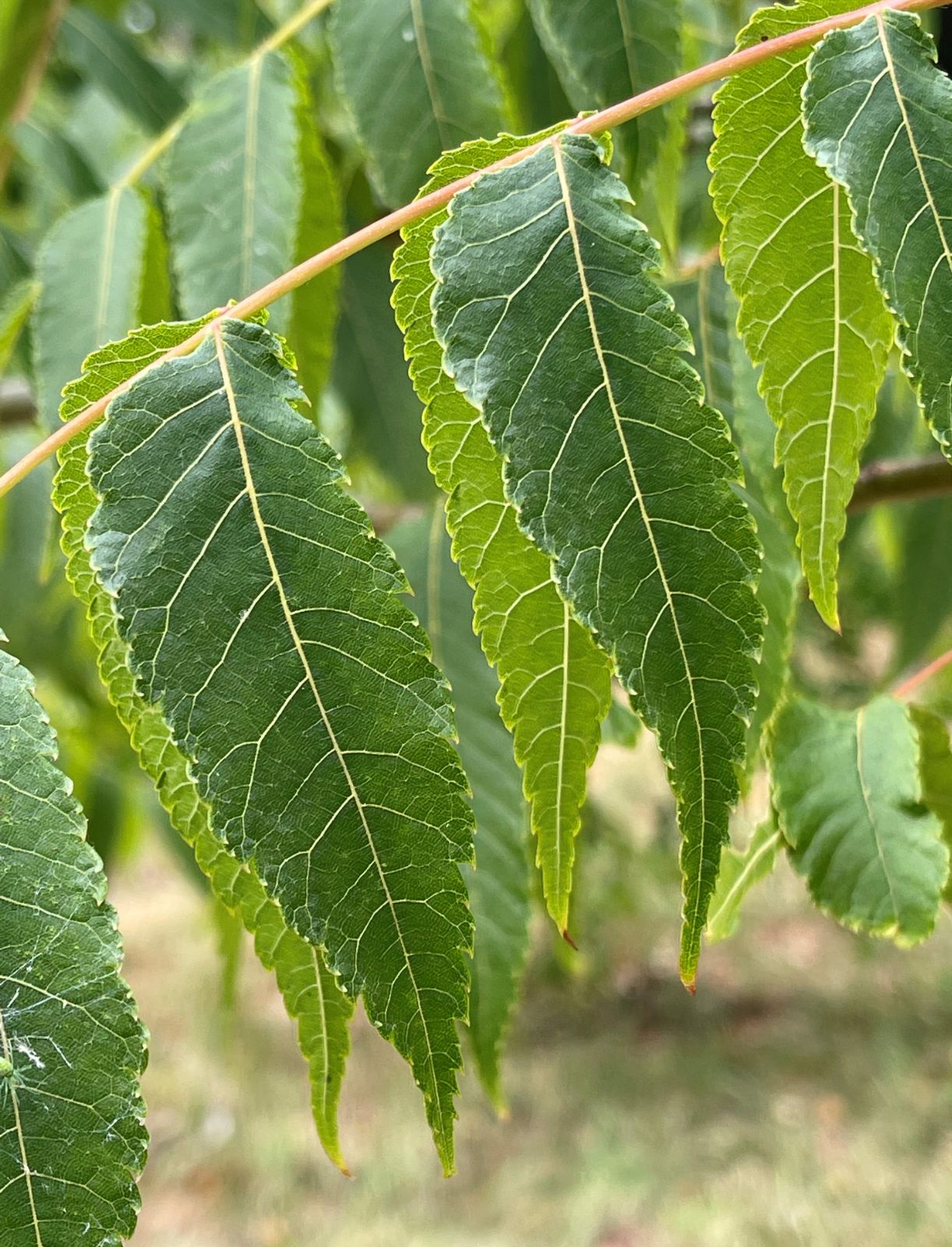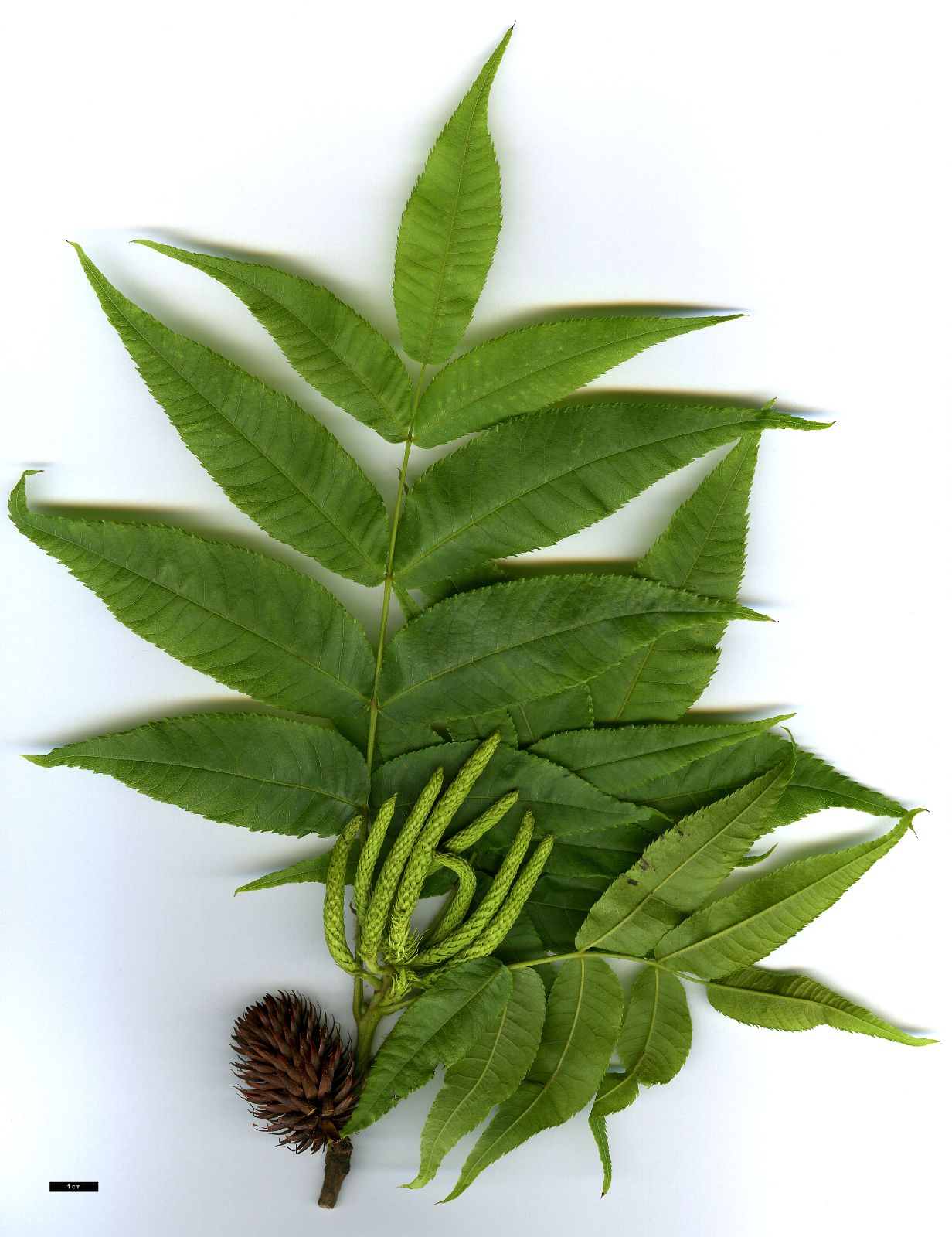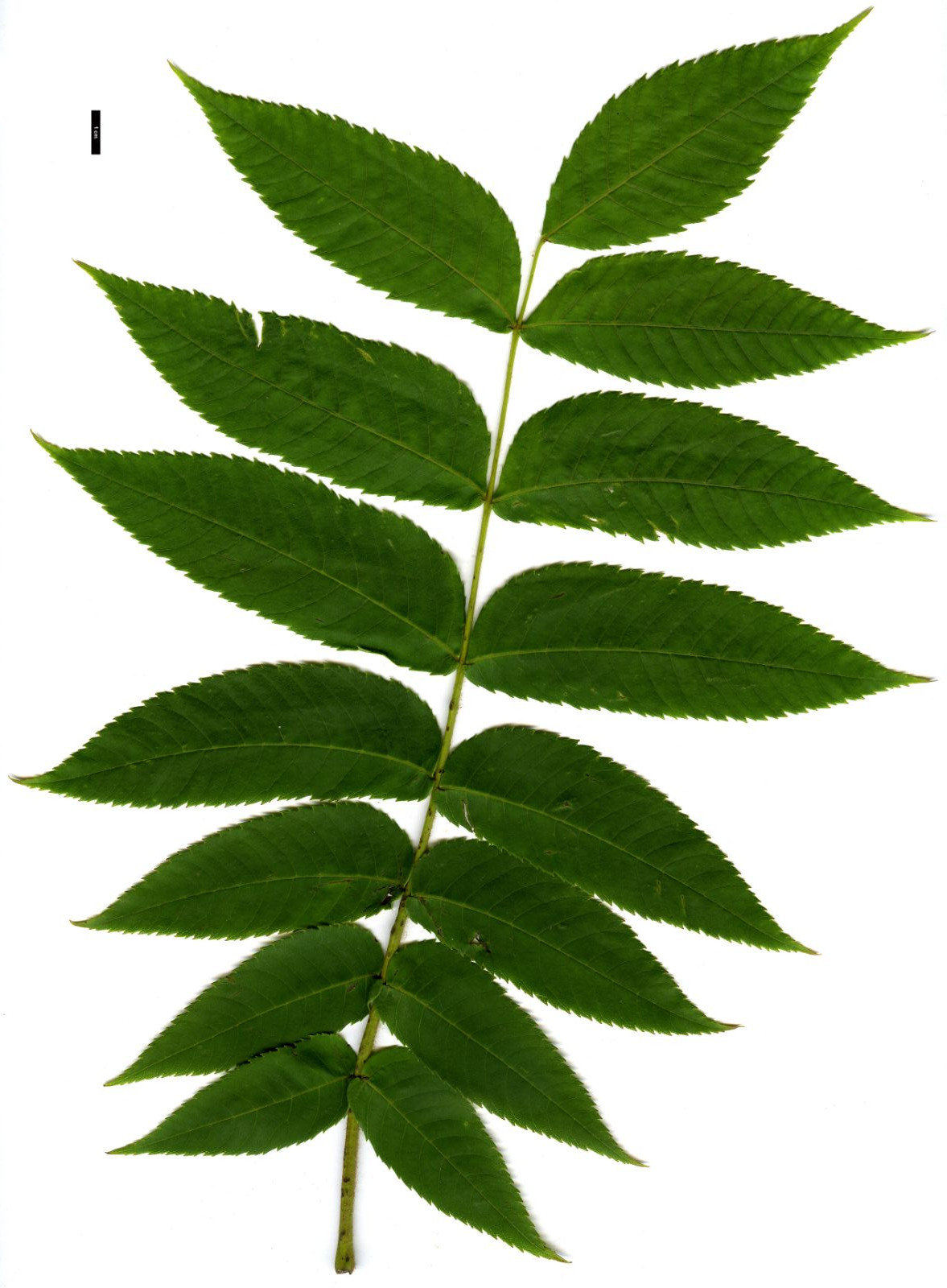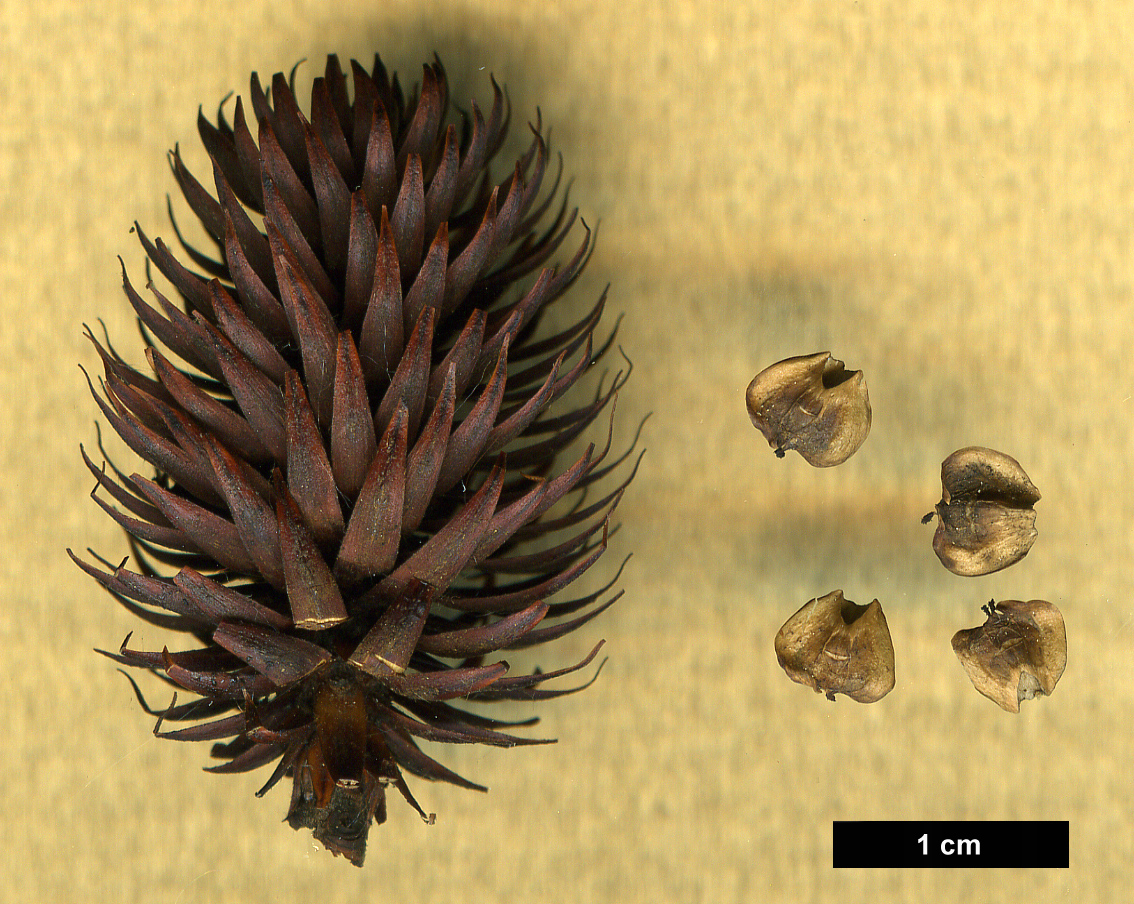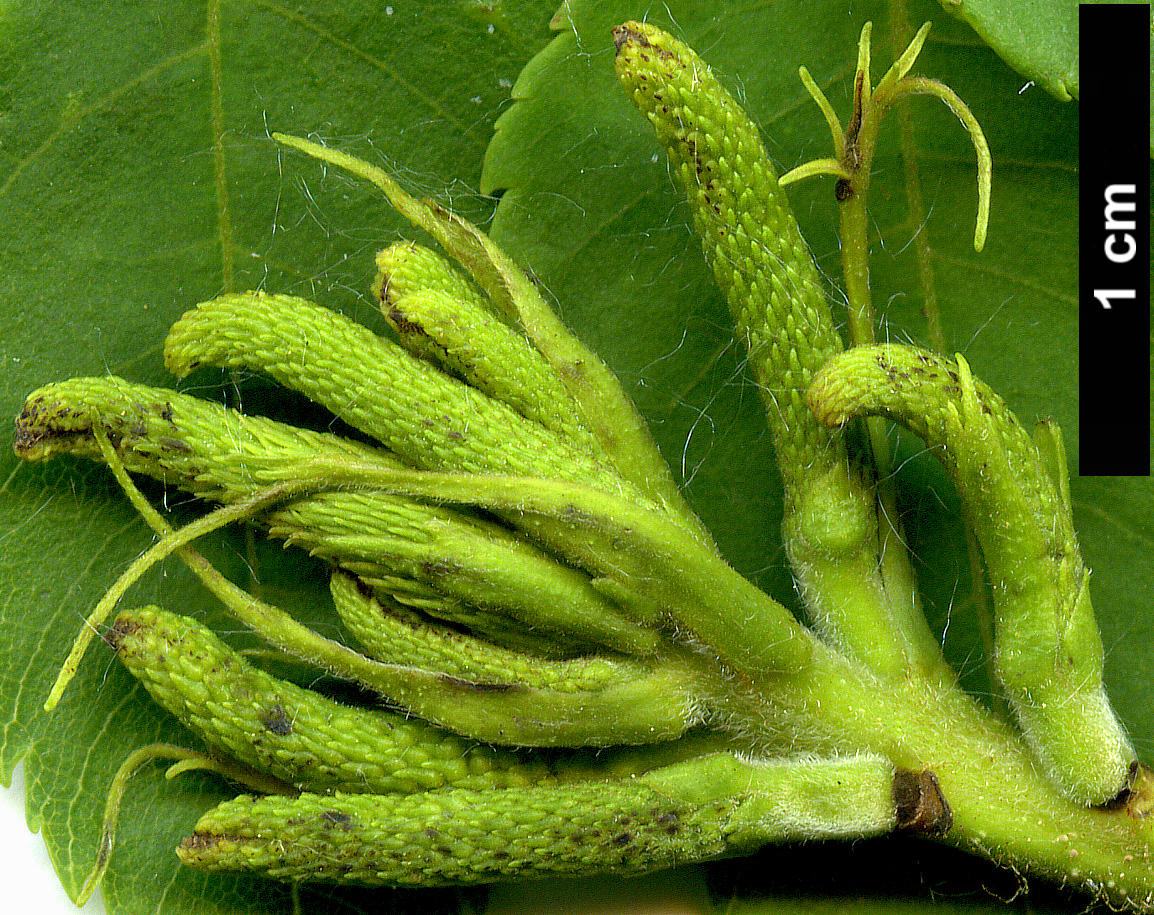Platycarya strobilacea
Sponsor
Kindly sponsored by
a member of the International Dendrology Society
Credits
Julian Sutton (2019)
Recommended citation
'Platycarya strobilacea' from the website Trees and Shrubs Online (treesandshrubsonline.
Genus
Common Names
- Platycarya
- Broad Nut
- hua xiang shu
- Nogurumi
- Nobu-no-ki
- Yamagurumi
Synonyms
- Fortunaea chinensis Lindl.
- Petrophiloides strobilacea (Siebold & Zucc.) Reid & Chandler
- Platycarya longipes Wu
- Platycarya simplicifolia G.R. Long
Other taxa in genus
Small to medium tree to 15 m, sometimes a shrub; bark dark grey, rough and fissured. Branchlets pubescent at forst, becoming glabrous, yellow-brown to chestnut, with solid pith. Leaves imparipinnate, (6–)8–30 cm; petiole 1–9 cm, glabrous; rachis glabrous; rachis and petiole sometimes pink to red. Leaflets (1–)7–15(23); lateral leaflets sessile, blade ovate-lanceolate to narrowly elliptic-lanceolate, 3–11 × 1.5–3.5 cm base oblique to cuneate; terminal leaflet with petiolule 0.6–3.5 cm, base rounded or broadly cuneate; upper surfaces glabrous; lower surfaces glabrous except for dense cluster of hairs at base and along midvein. Flowers in erect catkins, clustered at the tips of new growth; catkins of two types, male and androgynous. Androgynous spikes 2–10 cm, yellowish female flowers in broad, cone-like basal portion, male in narrower apical portion (sometimes absent); male spikes 2–15 cm, yellowish to bright yellow and scented early in fertile period, sometimes drooping at the tips. Fruiting spike cone-like, with persistent bracts, green ripening brown, ovoid-ellipsoid or ellipsoid-cylindric to subglobose, 2.5–5 × (1.2–)2–3 cm, retained on tree into the winter. Nuts flattened, narrowly two-winged, suborbicular to obovate, 3–6 × 3–6 mm. Flowers May–July (China), June–July (UK, US); fruiting July–October (China), August–October (UK) (Bean 1976; Huxley et al.1992; Lu et al.1999; Atkinson & Upson 2006; Fukuhara & Tokumaru 2014).
Distribution China Anhui, Fujian, S Gansu, Guangdong, Guangxi, Guizhou, Henan, Hubei, Hunan, Jiangsu, Jiangxi, Shaanxi, Shandong, Sichuan, Yunnan, Zhejiang. Japan Honshu, Kyushu, Shikoku. North Korea South Korea Vietnam Taiwan
Habitat Mixed forests on mountain slopes, thickets, hedgerows; 400–1400(–2200) m.
USDA Hardiness Zone 6-8
RHS Hardiness Rating H5
Conservation status Not evaluated (NE)
Platycarya strobilacea is a curious and unusual tree. Its rarity in cultivation may be due in part to the misconception that it is difficult to grow (Atkinson & Upson 2006), but perhaps also to the prejudice that ‘curious’ and ‘interesting’ are somehow incompatible with ‘attractive’. This need not be the case.
The Broad Nut’s pinnate leaves are typical of the Juglandaceae. However, the flowers (insect pollinated, in densely clustered erect catkins) and infructescences (cone-like, staying on the tree long after leaf fall) are absolutely not. It is here that the species’ chief attraction lies.
The erect catkins are clustered at the ends of new growth, and unlike those of walnuts and wingnuts, appear in the summer, making them less susceptible to late frosts. The catkins come in two types (Fukuhara & Tokumaru 2014). Most have only male flowers, at least yellowish, but bright yellow for a while in at least some wild plants. Other catkins have a broad basal section bearing only female flowers; beyond this there may be a narrower section with only male flowers, but this is sometimes absent, certainly in some cultivated specimens. Working in a wild Japanese population, Fukuhara & Tokumaru (2014) demonstrated that there are two morphs: some trees are protandrous, releasing pollen before the female flowers are receptive, while others are protogynous, the female flowers maturing first. The effect is to promote outbreeding.
Fukuhara & Tokumaru (2014) also demonstrated that this species is pollinated by thrips of several species. Colourful male flowers, scent (reminding some of apples), short and stout stamen filaments, short stigmas, small and sticky pollen grains, along with the habit of flowering only when leaves are fully expanded, are all features which had previously been noted as suggesting insect pollination. Other familiar members of the Juglandaceae are clearly wind-pollinated, and it should be noted that these workers could not exclude the possibility that wind was a secondary pollinator of Platycarya.
After flowering, the male catkins fall, along with the male portions of the androgynous catkins. What is left is a green cone-like infructescence, which ripens to a rich-brown. Persistent, projecting bracts give the impression of a teasel (Dipsacus) head. The small, winged nuts are dispersed by wind, as are those of Pterocarya and Cyclocarya. The cones can persist on the tree into the winter and beyond, a feature of real interest in the garden. Indeed, it seems to have been mistaken for a conifer when one of the first wild collections by a westerner (Robert Fortune) was made in winter (Atkinson & Upson 2006).
Wind dispersal, fast growth and early maturation are all features of Platycarya, which suit its ecological status as an early colonist. It also shows real plasticity in growth habit. The plant collector Ernest Wilson, working near Yichang, Hubei province, noted that it was ‘a common bush or small tree, more rarely a tree from 12–15 m tall with a trunk 1 m in girth but occasionally 20 m tall and 2.5 m in girth’ (Sargent 1917). There is a message for gardeners in this. If treated as an insignificant curiosity, stuffed into an overcrowded, neglected area on the margins, we can expect an insignificant specimen. Given space to develop, and a little care, it can become a shapely tree, as at Cambridge University Botanic Garden where it is treated as a lawn specimen (Cambridge University Botanic Garden 2019).
Platycarya strobilacea was described in 1843 from a specimen collected in Japan by the German doctor and botanist Philipp von Siebold. The specific epithet derives from the Ancient Greek strobilos, a twisted thing or pine cone, referring to the infructescence. Chinese seed, collected in the Zhoushan Islands, Zhejiang, in 1844 by the Scottish plant collector (and notorious tea plant smuggler) Robert Fortune was sent to Britain, but the resulting plants from this maritime area seem not to have proved hardy (Bean 1976). Ernest Wilson, working around Yichang, Hubei province, collected herbarium specimens in 1900 and 1907 (Sargent 1917) and ‘probably’ (Bean 1976) seed in 1907 under W495. It is no surprise that this common, widespread tree has been collected many times by western expeditions since then; no single introduction seems to have made an outstanding contribution to cultivated stock, and it seems pointless to enumerate them here.
We have been able to trace only one European specimen dating from the earlier 20th century, maybe or maybe not from the Wilson introduction. The Tree Register (2019) records a tree at the Hammond Arboretum, Leicestershire planted in 1928 (9 m × 29 cm in 2009, ‘leaning out but healthy’); this was a period when the schoolteacher Francis Hammond was enthusiastically acquiring and planting interesting trees adjacent to Market Harborough County Grammar School (The Hammond Arboretum 2019).
Other significant British specimens, mostly in the south and east of England, date from the 1980s to the 1990s. Apart from the Cambridge tree mentioned above (9 m × 31 cm in 2014, planted 1991) there is a fast growing specimen (13 m × 47 cm in 2010, planted in only 1999) at the Valley Gardens, Windsor Great Park, and a 12 m × 25 cm (2009) tree at Kew, planted in 1982 (The Tree Register 2019). Further north at Ness Gardens, Cheshire, a tree of Zhejiang provenance planted about 1990 has grown well, apparently unaffected by cold but perhaps suffering some bud death due to winter dessication in a dry, exposed position; it flowers reliably and sets at least some viable seed (T.J. Baxter, H.A. McAllister, pers. comms. 2019). There is a dense, luxuriantly bushy specimen in a very sheltered position at Westonbirt (see photograph).This remains a rare tree.
In continental Europe, young specimens are recorded in several Belgian collections and as far east as Freiburg, southern Germany. It has been too little tested to make any generalisations about hardiness in different areas, and provenance will certainly make a difference.
In North America the Broad Nut is recorded in a few specialist collections both in the Pacific Northwest (Washington Park, Seattle and the Hoyt Arboretum, Portland – University of Washington Botanic Gardens 2019, Hoyt Arboretum 2019) and on the eastern seaboard, with trees dating back to the 1970s in the US National Arboretum, Washington D.C. (southern Japanese origin – US National Arboretum 2019) and the Arnold Arboretum, Boston (both northern Japanese and Korean provenances – Arnold Arboretum 2019). We have no evidence to suggest that it will thrive beyond these areas.
Propagation is normally from freshly sown seed. Huxley et al. (1992) suggest grafting onto Carya stock: this may work, but seems a rather desperate measure given that hickories are notoriously difficult to transplant even at an early stage due to their tap roots (Dirr 2009).

